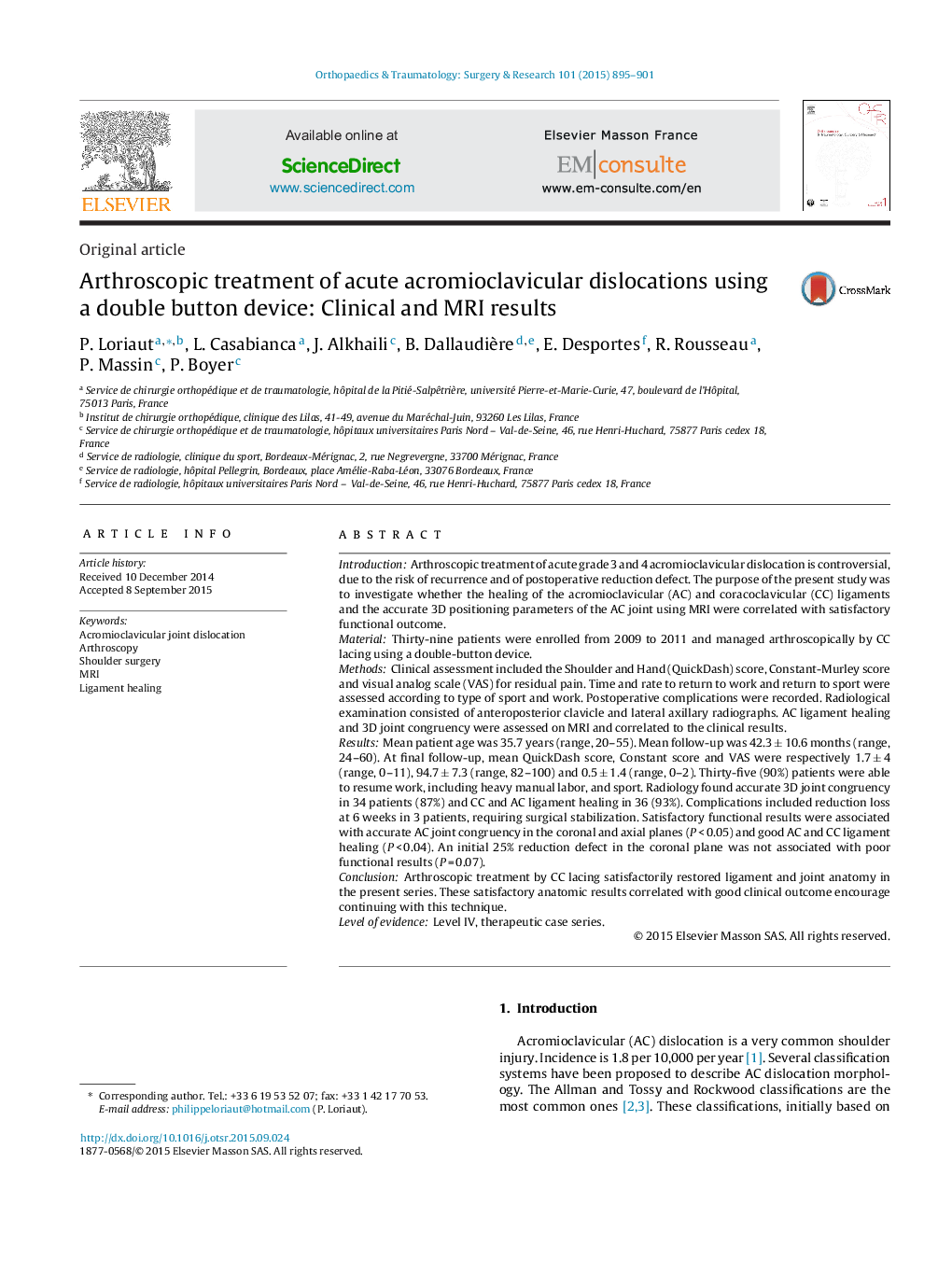| کد مقاله | کد نشریه | سال انتشار | مقاله انگلیسی | نسخه تمام متن |
|---|---|---|---|---|
| 4080967 | 1267574 | 2015 | 7 صفحه PDF | دانلود رایگان |

IntroductionArthroscopic treatment of acute grade 3 and 4 acromioclavicular dislocation is controversial, due to the risk of recurrence and of postoperative reduction defect. The purpose of the present study was to investigate whether the healing of the acromioclavicular (AC) and coracoclavicular (CC) ligaments and the accurate 3D positioning parameters of the AC joint using MRI were correlated with satisfactory functional outcome.MaterialThirty-nine patients were enrolled from 2009 to 2011 and managed arthroscopically by CC lacing using a double-button device.MethodsClinical assessment included the Shoulder and Hand (QuickDash) score, Constant-Murley score and visual analog scale (VAS) for residual pain. Time and rate to return to work and return to sport were assessed according to type of sport and work. Postoperative complications were recorded. Radiological examination consisted of anteroposterior clavicle and lateral axillary radiographs. AC ligament healing and 3D joint congruency were assessed on MRI and correlated to the clinical results.ResultsMean patient age was 35.7 years (range, 20–55). Mean follow-up was 42.3 ± 10.6 months (range, 24–60). At final follow-up, mean QuickDash score, Constant score and VAS were respectively 1.7 ± 4 (range, 0–11), 94.7 ± 7.3 (range, 82–100) and 0.5 ± 1.4 (range, 0–2). Thirty-five (90%) patients were able to resume work, including heavy manual labor, and sport. Radiology found accurate 3D joint congruency in 34 patients (87%) and CC and AC ligament healing in 36 (93%). Complications included reduction loss at 6 weeks in 3 patients, requiring surgical stabilization. Satisfactory functional results were associated with accurate AC joint congruency in the coronal and axial planes (P < 0.05) and good AC and CC ligament healing (P < 0.04). An initial 25% reduction defect in the coronal plane was not associated with poor functional results (P = 0.07).ConclusionArthroscopic treatment by CC lacing satisfactorily restored ligament and joint anatomy in the present series. These satisfactory anatomic results correlated with good clinical outcome encourage continuing with this technique.Level of evidenceLevel IV, therapeutic case series.
Journal: Orthopaedics & Traumatology: Surgery & Research - Volume 101, Issue 8, December 2015, Pages 895–901